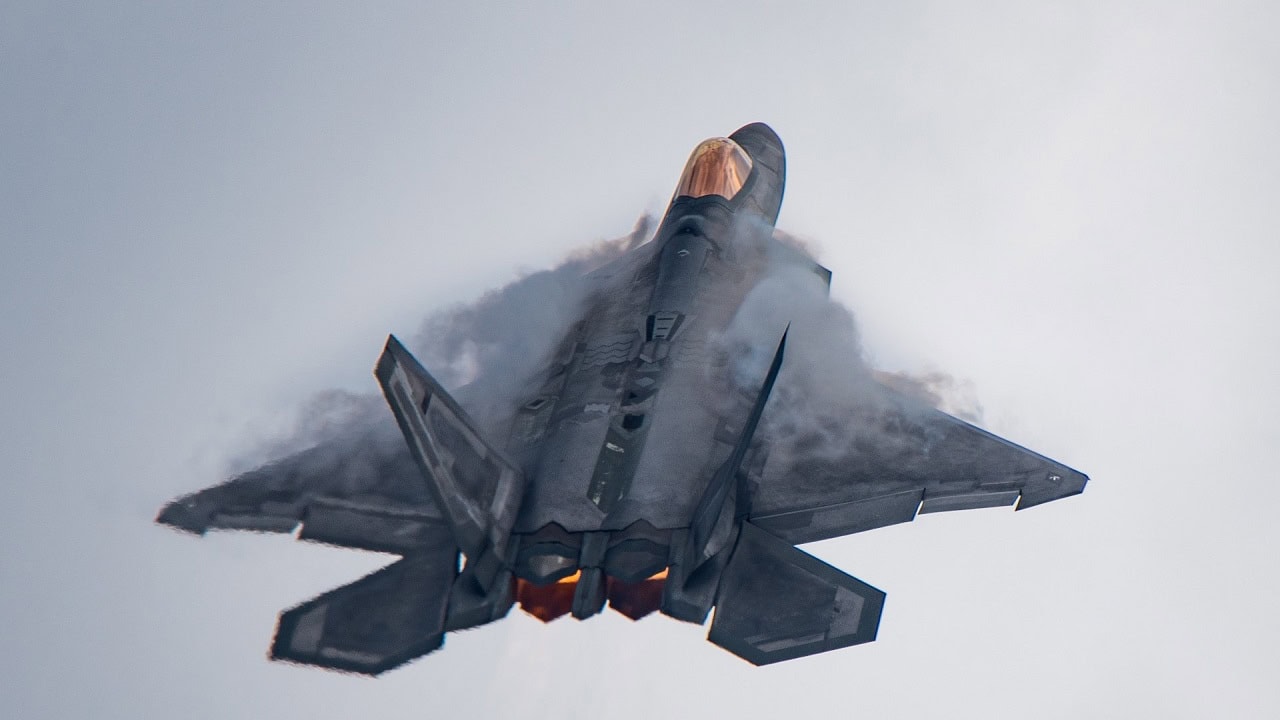F-22 Raptors were sent to China’s ‘backyard’ and near the South China Sea just months back in a clear signal to Beijing: A pair of U.S. Air Force F-22 Raptors landed at Clark Air Base in the Philippines earlier in March, signaling closer defense ties between Washington and Manila.
The facility is notable for once being part of America’s largest overseas base.
The event marked the first time the fifth-generation air-superiority fighter has been deployed to the Southeast Asian nation.
“For the first time in history, two F-22 ‘Raptor’ stealth fighter jets from @PACAF (Pacific Air Forces) landed at Clark Air Base to reinforce commitment to the Mutual Defense Treaty,” the U.S. Embassy in the Philippines (@USEmbassyPH) announced via Twitter, further noting that U.S. and Filipino pilots discussed training, aircraft capabilities, and future collaboration.
It might have been a nice change of scenery for the aircrews and support personnel of the 525th Fighter Squadron, which is stationed at Joint Base Elmendorf–Richardson, Alaska. The F-22s, supported by a KC-135 Stratotanker from the 909th Air Refueling Squadron at Kadena Air Base, Japan, trained with their counterparts from the Philippine Air Force 5th Fighter Wing on March 13-14.
“This was the first time that F-22s, or any fifth-generation aircraft, have landed on and operated out of the Philippines,” explained Capt. Karl Schroeder, 525th Fighter Squadron Raptor pilot. “This milestone with a regional ally aids in providing stability and security to the Indo-Pacific.”
The deployment to Clark Air Base was accomplished with support from a small team of airmen and a minimal footprint, thus exercising another primary focus of the U.S. Air Force — Agile Combat Employment.
F-22 Involved in Multiple Drills
According to PACAF, day one kicked off with a luncheon where Philippine Air Force members introduced U.S. Air Force personnel to a spread of traditional Filipino dishes. The meal was followed by expert exchanges detailing the capabilities of each nation’s fighter aircraft, as well as a static tour of the F-22s, the KC-135 Stratotanker, and the Philippine FA-50PH multi-role fighter aircraft.
The following morning, the F-22s and two FA-50s took off to engage in coordinated in-flight integration and to show off each aircraft’s respective capabilities. During the drills, U.S. pilots operated with their Filipino counterparts in a series of low-altitude flyovers, air combat maneuvers, and formation training. The Raptor pilots were able to get a layout of the land, as well as of the different Philippine air bases.
Growing familiar with the airspace and the territory below it will allow for increased capability and integration in the future, the pilots noted.
During a second phase of the flight, the Raptors engaged in air combat maneuvers, or dogfighting, while the FA-50s observed. With help from a KC-135 Stratotanker, the aircraft also engaged in air-to-air refueling over the heavily contested South China Sea.
“With any operation there are always multiple roles and responsibilities to make the mission happen,” said Air Force Capt. Joe Baumann, a Raptor pilot assigned to the 525th Fighter Squadron. “With the FA-50’s capability for precision strike and the Raptor’s ability to establish air dominance, we make a lethal combo to support one-another on multiple mission sets.”
Closer Ties Between Washington and Manila
Though the Philippine Constitution prohibits the permanent basing of foreign troops, the two nations have an Enhanced Defense Cooperation Agreement that allows American forces to increase their footprint by rotating to a handful of predetermined locations.
“The EDCA is a key pillar of the U.S.-Philippines alliance, which supports combined training, exercises, and interoperability between our forces,” DoD officials told the Military Times in February. “Expansion of the EDCA will make our alliance stronger and more resilient, and will accelerate modernization of our combined military capabilities.”
The Agreement grants U.S. forces access to a number of military camps. One of them, Basa Air Base in Pampanga on the island of Luzon, just launched a $25 million renovation of its runway in preparation to be used as a hub for joint task force exercises and humanitarian assistance, USNI News reported.
Filipino President Ferdinand Marcos has worked to thaw relations with Washington. This follows a period of tension between the U.S. and the Philippines. Former Philippine President Rodrigo Duterte threatened to sever military relations with Washington while he sought to strengthen relations with China and Russia.
The shift back to friendlier relations comes as the United States has committed to backing the Philippines in the South China Sea.
Author Experience and Expertise:
A Senior Editor for 19FortyFive, Peter Suciu is a Michigan-based writer. He has contributed to more than four dozen magazines, newspapers, and websites with over 3,200 published pieces over a twenty-year career in journalism. He regularly writes about military hardware, firearms history, cybersecurity, politics, and international affairs. Peter is also a Contributing Writer for Forbes and Clearance Jobs. You can follow him on Twitter: @PeterSuciu.
From 19FortyFive
Footage Shows World War I Guns Being Used in Ukraine
‘Vacuum Bombs Destroyed’: Ukraine Footage Shows Putin’s Thermobaric Rockets Destroyed
BOOM! Ukraine Video Shows Precision Strike on Russian Air-Defense System

